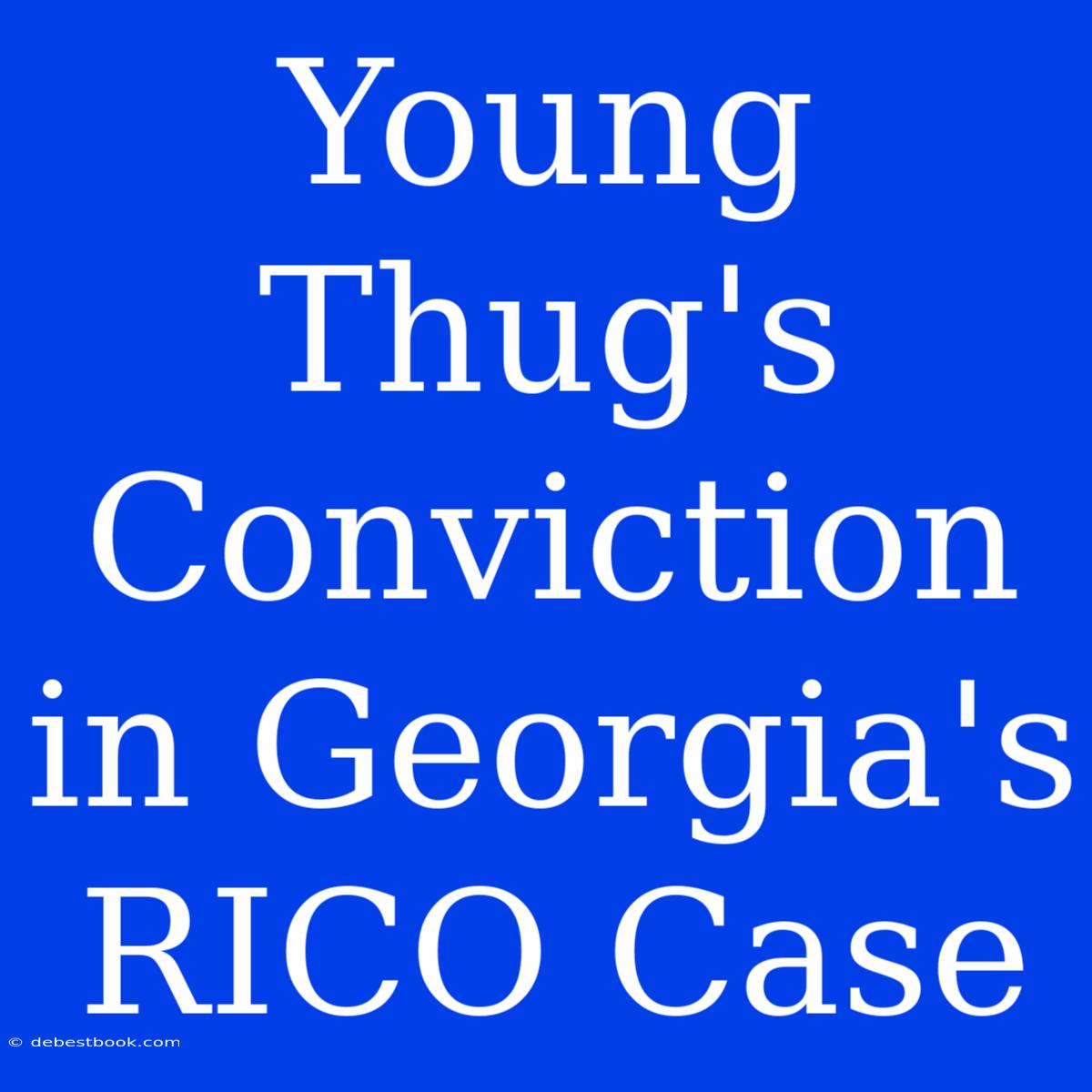Young Thug's Conviction: A Deep Dive into the Georgia RICO Case
Is the "YSL" label a gang or a music label? The recent conviction of rapper Young Thug in Georgia's RICO case has sparked heated debates and raised crucial questions about the intersection of music, culture, and law. This article delves into the intricacies of the trial, unpacking the arguments, the evidence, and the implications for the future of music and law in the US.
Editor Note: Young Thug's conviction in Georgia's RICO case has significant implications for the future of music and law in the US.
This case is crucial to understand because it highlights the blurry lines between artistic expression and criminal activity. It underscores the potential for misinterpretations and raises questions about the application of RICO laws in contexts beyond traditional organized crime.
Our Analysis: We've analyzed the case documents, legal arguments, witness testimonies, and expert opinions to provide a comprehensive understanding of the case. This guide aims to equip readers with the knowledge and context necessary to critically assess the verdict and its impact on the music industry and beyond.
Key Takeaways from the Trial:
| Key Takeaway | Explanation |
|---|---|
| RICO Laws and Music: | The trial showcased the potential for misinterpretations of RICO laws when applied to artistic expressions and cultural contexts. |
| Gang Affiliation vs. Artistic Identity: | The distinction between gang affiliation and artistic identity, particularly in the context of music, was central to the case and remains a point of debate. |
| Impact on Creative Expression: | The case raises concerns about the potential chilling effect on artistic expression, especially for artists working within communities where gang culture might be prevalent. |
| Justice System and Racial Bias: | The trial has reignited conversations about racial biases within the legal system, particularly concerning the disproportionate targeting of young Black men in gang-related cases. |
| The Blurred Lines of Law and Art: | The trial has brought the complex relationship between law and art to the forefront, highlighting the need for nuanced understanding and sensitivity in interpreting artistic expression. |
Young Thug's Conviction
The heart of the case hinges on the interpretation of the "Young Slime Life" (YSL) label. Prosecutors argued that YSL is a criminal gang, pointing to lyrics, social media posts, and alleged gang activities as evidence. The defense contended that YSL is primarily a music label and that its members' actions were unrelated to criminal activity.
Gang Affiliation and Artistic Identity
One of the core issues in the case is the distinction between gang affiliation and artistic identity. Many artists draw inspiration from their environment and personal experiences, including those related to gang culture. How does the law differentiate between artistic expression and actual gang affiliation?
Impact on Creative Expression:
The conviction raises concerns about the potential chilling effect on creative expression. Will artists be hesitant to explore themes related to gangs, violence, or social realities for fear of legal repercussions? This concern is particularly relevant for artists working within communities where gang culture might be prevalent.
Justice System and Racial Bias:
The case has reignited discussions about racial biases within the legal system. Critics argue that the disproportionate targeting of young Black men in gang-related cases reflects systemic racism and a lack of understanding of cultural context.
The Blurred Lines of Law and Art
The trial highlights the complex relationship between law and art. Artistic expression is often subjective and open to interpretation. The case underscores the need for nuanced understanding and sensitivity when interpreting artistic expressions, especially in contexts where cultural elements and personal experiences might be interwoven.
The Verdict and Its Implications:
Young Thug's conviction underscores the complex challenges faced by artists, especially those working within communities where gang culture might be present. The trial has prompted conversations about the boundaries of artistic expression, the potential for misinterpretations, and the need for a more nuanced understanding of culture and context within the legal system.
This case is far from over. The trial serves as a reminder that the relationship between music, culture, and the law is constantly evolving and demands ongoing attention and critical examination.

